The kitchen is a space where home life, comfort, taste, and communication come together. Competent zoning helps to transform it into a convenient and harmonious system where every detail serves a specific purpose.
Dividing the kitchen into functional zones allows you to use the space more efficiently, simplify cleaning, and make the cooking process more enjoyable and intuitive. Regardless of kitchen size, the proper zoning helps create an ergonomic, safe, and inspiring space. If you're exploring ways to improve day-to-day workflow, these kitchen organization ideas can help you maximise every cabinet and drawer.
What are Kitchen Zones?
.webp)
Kitchen zones are areas dedicated to specific tasks such as preparation, cooking, cleaning, storage, and serving. Instead of organising your kitchen around cabinet positions, zoning follows how you move through tasks, making the space easier to use, safer, and more efficient.
This approach allows you to organize the space not by the location of the cabinets, but by the logic of use. Thanks to zoning, the kitchen becomes more convenient to work in, easier to maintain, safer, and more comfortable for all family members.
The Prep Zone

The prep zone is where ingredients go from “in the fridge” to “ready to cook.” It’s the space for washing, cutting, mixing, and measuring before anything reaches the stove.
This is where the main activities before cooking take place: washing, cutting, mixing, and measuring ingredients. It is best to locate this zone between the sink and the refrigerator to minimize unnecessary movement.
The work surface should be wide and comfortable enough to allow for easy cooking. Well-planned pantry organization solutions also make the prep zone faster and more intuitive. All the necessary tools should be within easy reach. A trash can or compost bin should be located nearby so that waste can be disposed of immediately. This layout helps to maintain cleanliness and speeds up the cooking process.
Cooking Zone
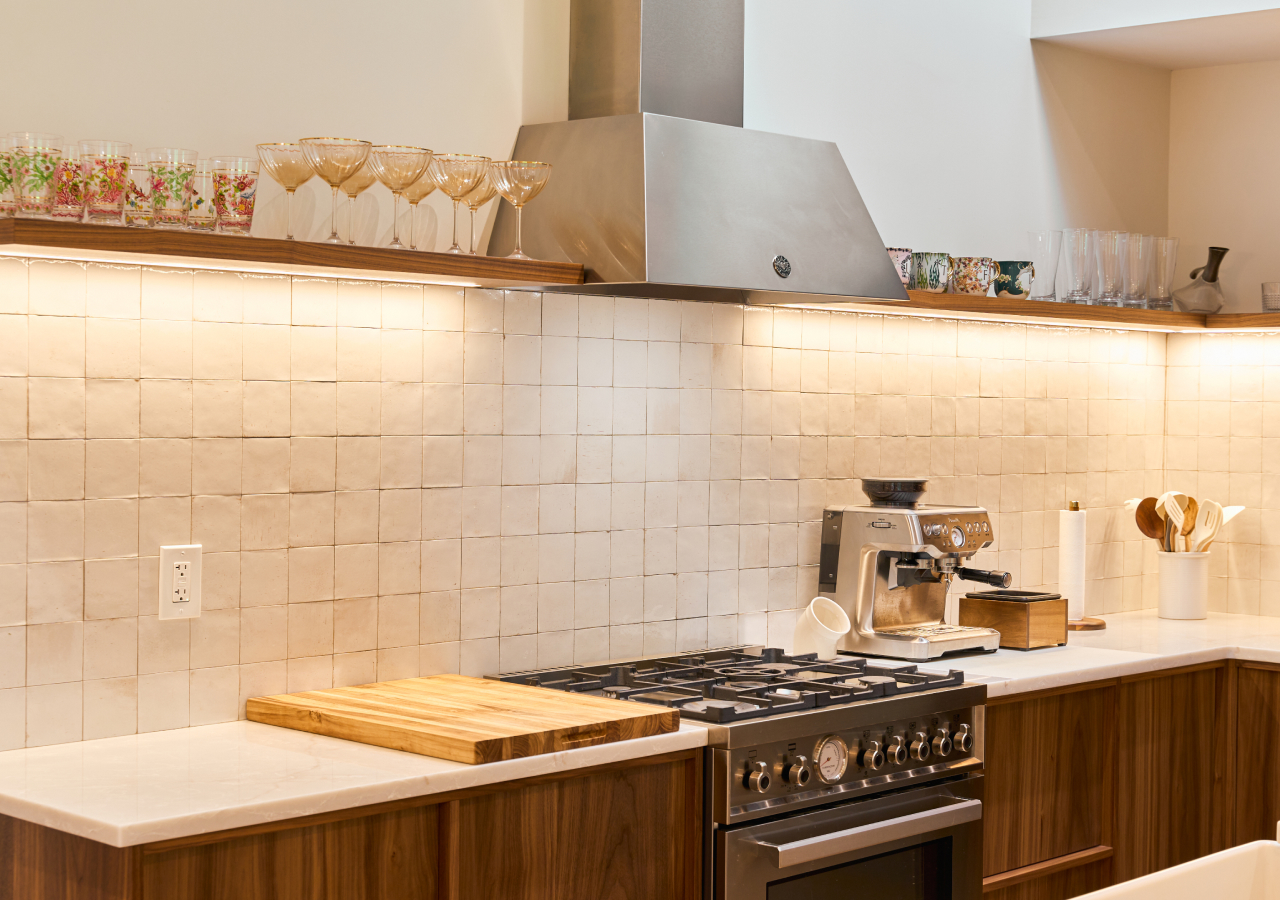
The cooking zone centres around the hob, oven, and microwave. Keep pots, pans, utensils, oils, and spices within arm’s reach and pair the area with good lighting and ventilation for safe, comfortable cooking.
The main hub of activity in the kitchen is the space around the hob, oven, and microwave. This is where all processes related to the heat treatment of food are concentrated. For convenience, it is worth keeping the cookware and tools you use most often close to the stove so you don’t have to move far while cooking.
A spice rack or built-in organizer next to the cooktop will help speed up the cooking process. It is also important to consider a ventilation system so that odors and steam do not spread throughout the house. Good lighting and convenient placement of utensils make this area safe and comfortable for us.
Cleaning Zone
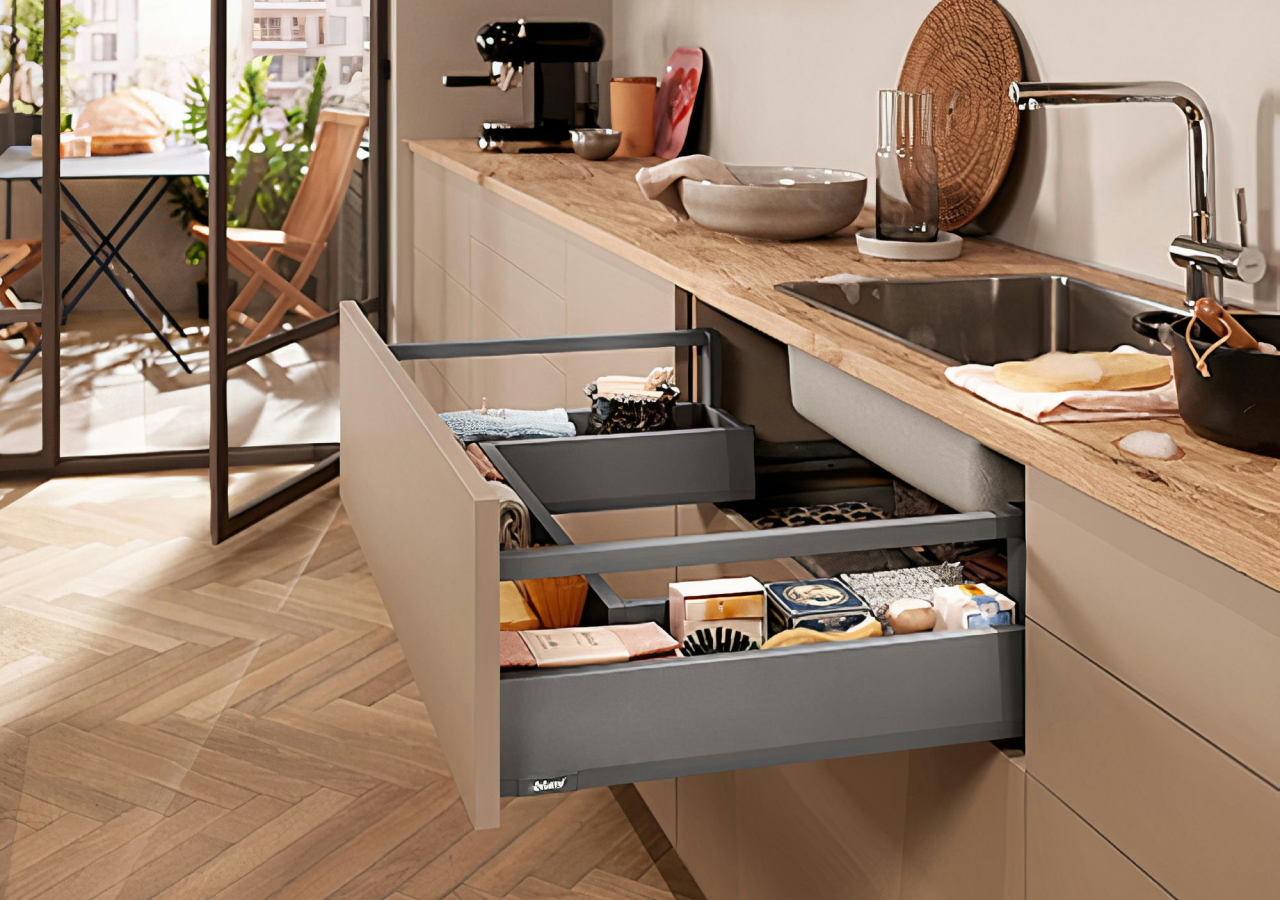
The cleaning zone revolves around the sink and dishwasher, with detergents, tools, trash, and recycling stored nearby for a smoother workflow.
The cleaning zone combines the sink, dishwasher, and storage space for cleaning supplies. It connects the cooking and preparation zones, creating a logical workflow. This is a convenient place to store dishwashing detergent, sponges, brushes, towels, and dishwasher capsules.
A pull-out drawer for household chemicals can be installed under the sink, with trash cans and recycling bins nearby. This layout makes cleaning quick and convenient. Soft-close mechanisms and well-designed shelving provide additional comfort.
Storage Zone
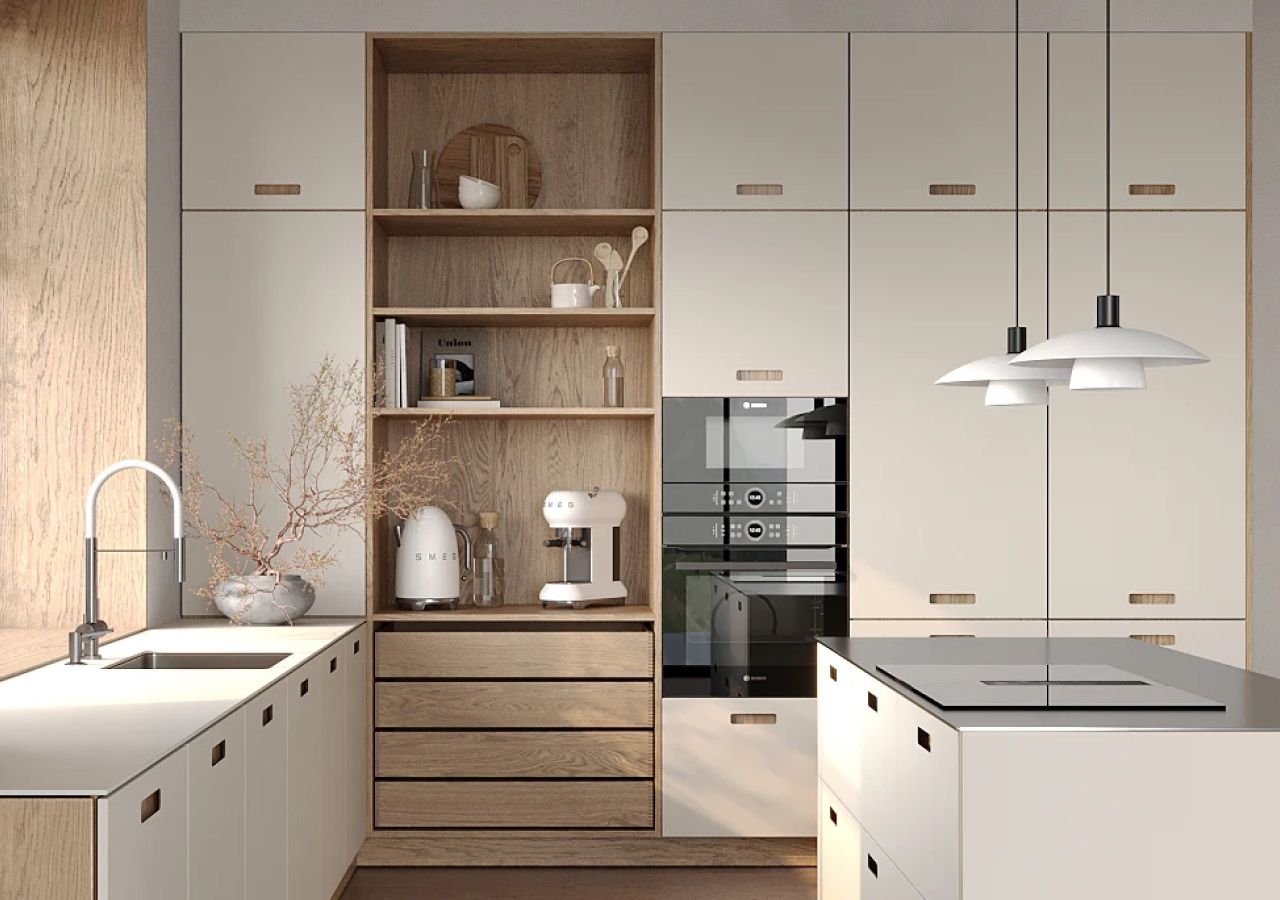
The storage zone includes the refrigerator, pantry, and cabinets for dishes and cookware. Frequently used items should be kept at eye or hand level.
The storage zone is the heart of an organized kitchen, where all supplies and kitchen utensils are located. It includes a refrigerator, freezer, pantry, and cabinets for dishes, pots, pans, and serving items.
Food and kitchen utensils must be arranged in a logical sequence: the pantry should be next to the preparation area, and dishes should be closer to the serving or washing area. Frequently used food and utensils should be stored at eye or hand level, and rarely used items should be stored higher or lower. This arrangement helps save time and maintain order, creating a feeling of space and convenience.
Serving or Social Zone
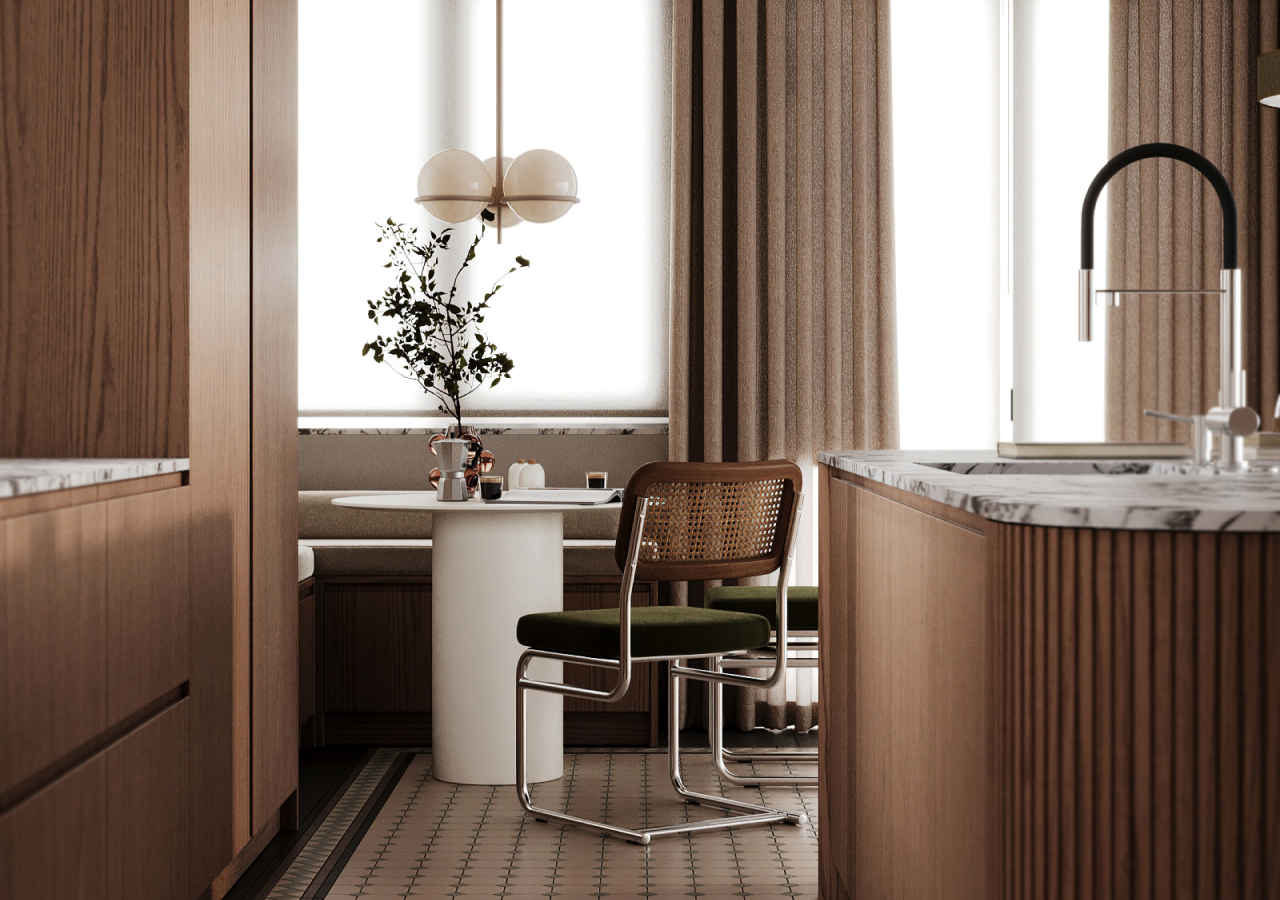
This zone supports eating, socialising, and hosting and should be close to the cooking area without blocking movement between key appliances.
This zone combines the functions of eating, socializing, and relaxing, turning the kitchen into a multifunctional space. It is convenient for serving ready-made meals, hosting family dinners, or welcoming guests.
The zone can be organized with a kitchen island, bar counter, or small dining table. It is important that it is located near the cooking area but does not interfere with movement between the refrigerator, stove, and sink. Comfortable seating, soft lighting, and decorative elements create a cozy atmosphere. Such a space makes the kitchen not only practical but also welcoming, turning it into the center of home life.
Additional Specialized Zones Adapted to Lifestyle
.webp)
Specialized zones like baking stations, coffee corners, kids’ snack areas, and outdoor transition zones adapt the kitchen to individual habits.
Modern kitchens are designed with the individual habits and lifestyle of the owners in mind, which is why specialized zones adapted to specific tasks are becoming increasingly common.
The baking zone is designed for those who enjoy making desserts, bread, or dough. It is important to provide a separate work surface here: spacious and stable enough to comfortably roll out dough or work with a mixer. Built-in cabinets or pull-out drawers within easy reach will help you store baking trays, molds, rolling pins, scales, and other baking tools.
A beverage or coffee zone creates a cozy corner for your morning ritual or entertaining guests. It is a convenient place to put a coffee machine, kettle, mugs, tea and coffee jars, and, if desired, a small refrigerator for wine, beer, or milk. This space frees up the main work surface and adds a café atmosphere to the kitchen.
A children's and snack zone is especially useful for families with small children. Here you can install lower drawers or open shelves to store light snacks, children's dishes, and drinks. Thanks to the accessibility of this area, children can help themselves to a snack without disturbing adults who are cooking.
The transition zone between the house and the street is especially relevant for open-plan kitchens. It connects the interior space with the terrace, patio, or barbecue area, making it easier to serve and deliver food outdoors. This solution makes the kitchen more flexible and convenient for summer lunches and evenings outdoors.
Advantages of Kitchen Zoning
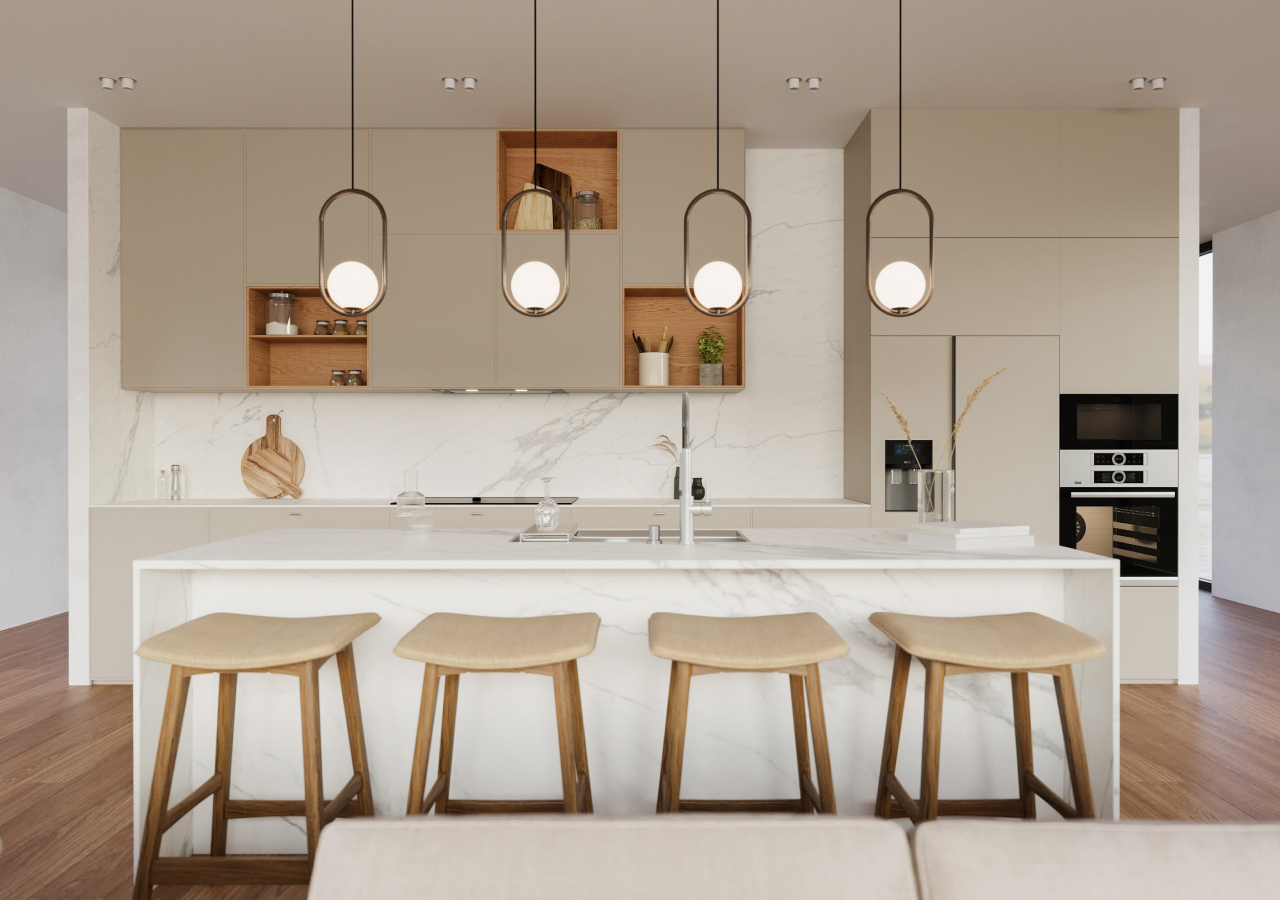
Zoning reduces unnecessary movement, increases safety, supports teamwork in the kitchen, and can increase home resale value.
Zoning makes the kitchen but truly functional. It increases efficiency by reducing unnecessary movement between the main tools and work areas. The space becomes safer: less clutter, less chance of spills and injuries. This organization also promotes teamwork—several people can cook at the same time without getting in each other's way.
Another advantage is the ability to adapt the layout to your own habits and lifestyle, rather than to fashion trends. In addition, thoughtful zoning increases the resale value of your home, as a rational layout always attracts buyers. Zoning makes the kitchen not just functional, but a truly personal space that reflects your style and rhythm of life.
How to Organize Kitchen Zones
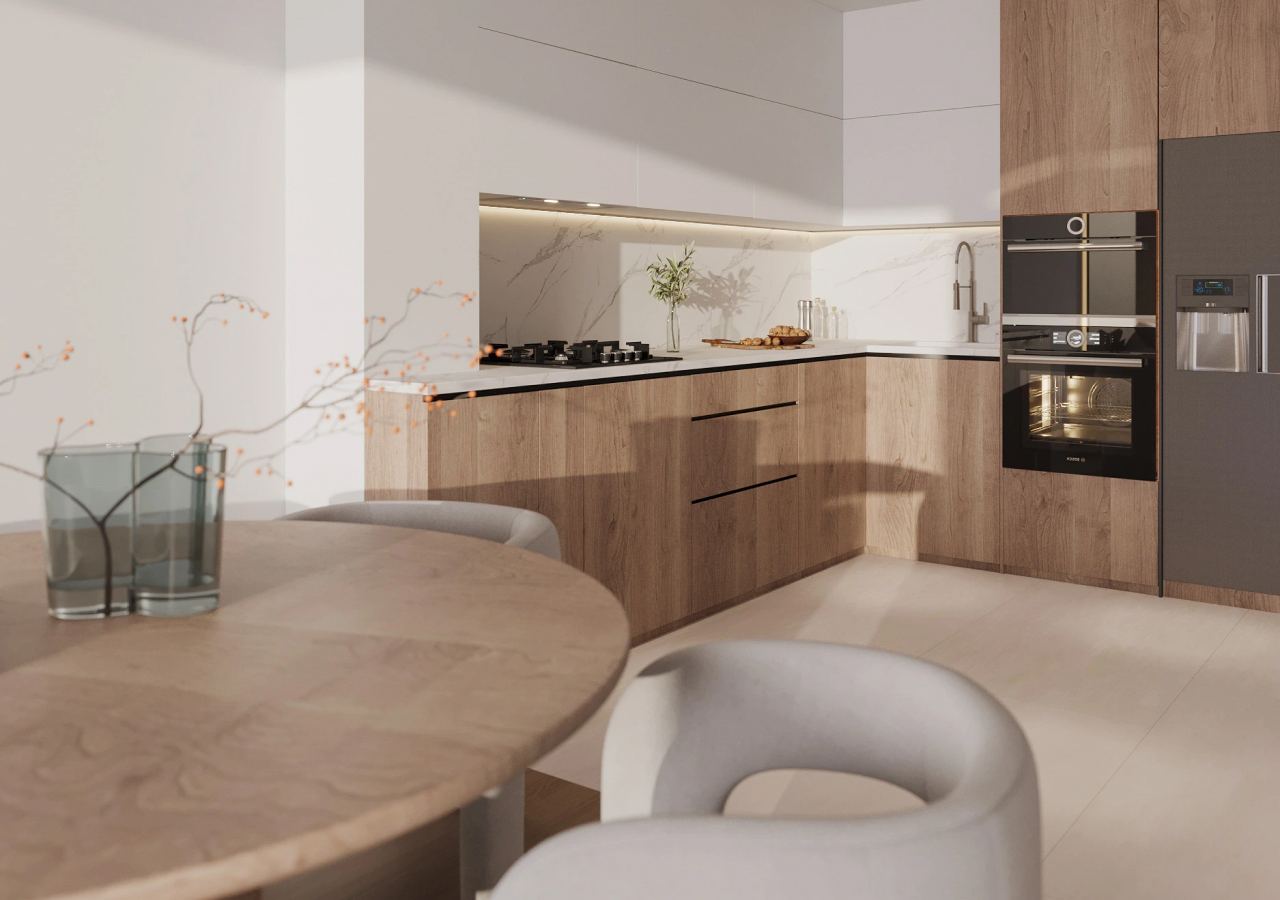
Organize zones by observing how you cook, grouping tools by task, and keeping frequently used items close to where they’re needed.
Start by observing yourself: how you cook, what actions seem inconvenient, and what could be improved. Then group items by task: tools for preparation, baking, serving, and cleaning should have their own permanent places. When the plan is ready, reorganize drawers and shelves so that frequently used items are within arm's reach, and less necessary items are higher or lower.
For convenience, you can add labels or small visual cues. Periodically review the layout of items so that the kitchen always matches your rhythm and lifestyle. Well-planned areas will help make the kitchen a space where everything is in its place and works for your convenience.
Conclusion
Kitchen zoning is not just a design technique, but a way to create a space that adapts to you. It helps to make the kitchen logical, comfortable, and harmonious, where everything is thought out to the smallest detail. This kind of organization not only saves time and energy, but also makes every action enjoyable. As a result, the kitchen becomes a space where you want to spend time, cook, socialize, and be inspired every day.

.jpg)



